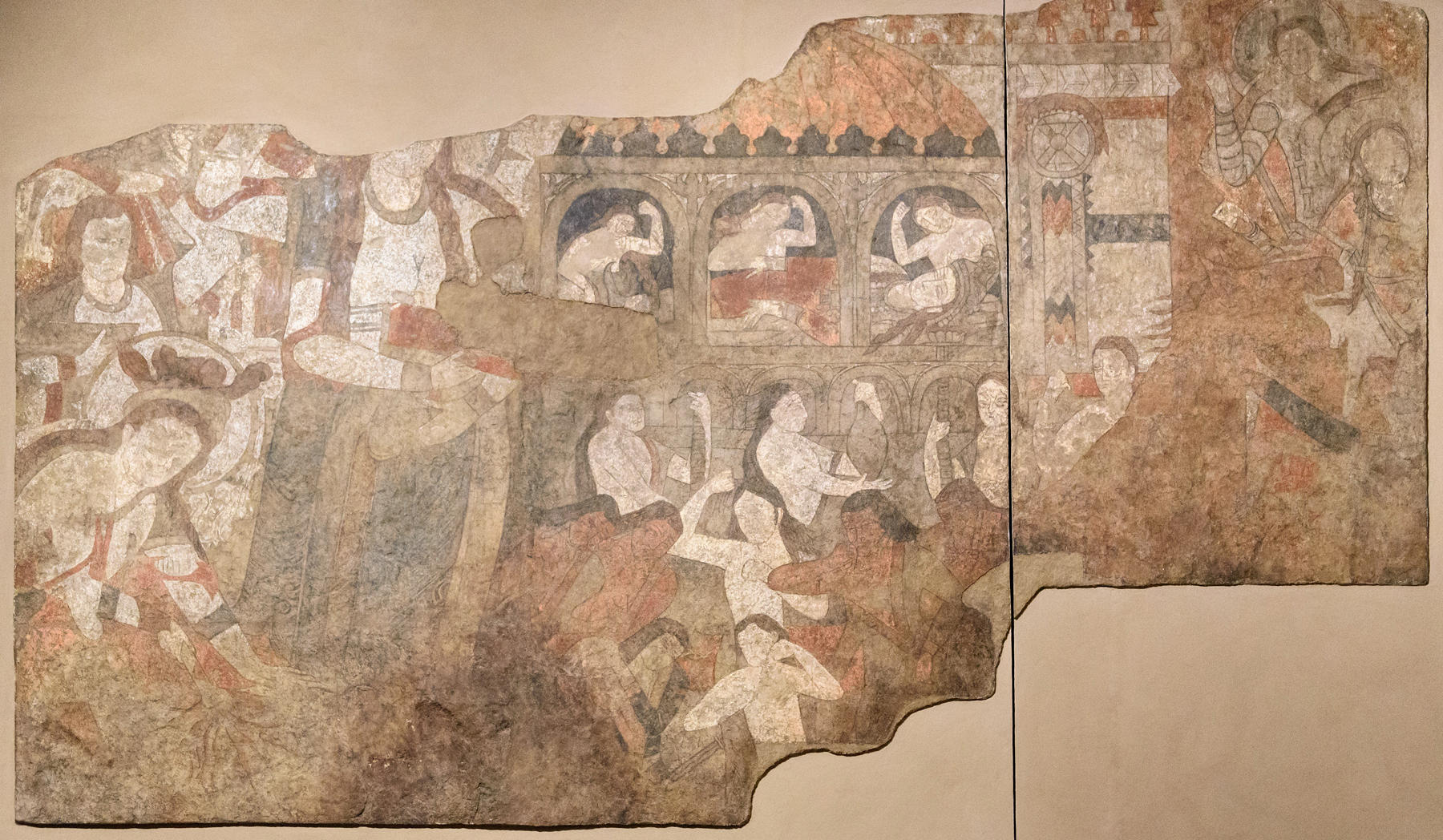
Shop Amazon - Create an Amazon Baby Registry
The Death of Syavush, Piandjikent



SCENE "Mourning"
Painting with glue paints on dry loess plaster
VI century
Penjikent. Temple II. Main hall, south wall
Receipt: from excavations in 1948
The painting depicts a scene of mourning a deity of a dying and resurrecting nature, a calendar ritual of the Sogdians, which is described in Chinese and Manichean Sogdian written sources.
Photo by Oleg Belaychuk
Referenced as illustration 86, p.103 in Tamara Talbot Rice, Ancient Arts of Central Asia, 1965
86 Reconstruction of a wall-painting from the south wall of the main hall at Piandjikent. It shows the death of the god Syavush and his rebirth in the spring (not shown), a symbolic interpretation of the birth of the new year. Persia's Nu Ruz. In it the dead youth is seen through the rounded arches of the bier which is being carried by pall bearers and surrounded by weeping mourners. Other mourners appear in the foreground, and it is possible that some of the men are Turks and others Soghdians. Piandjikent, building XI, south wall, seventh-eighth century. State Hermitage Museum, Leningrad.